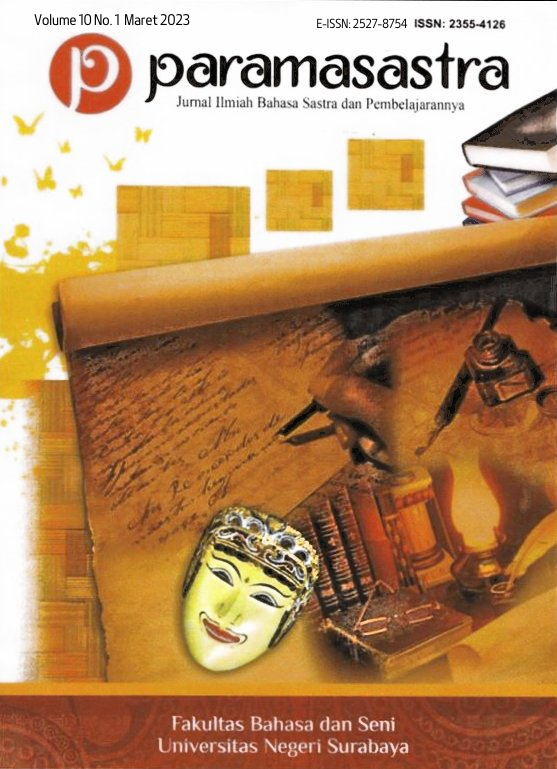Pembentukan Kompetensi Menulis Hanzi Siswa SMAN 2 Sidoarjo Melalui Mentoring Learning Model dengan Menggunakan Penulisan Kaligrafi sebagai Media
DOI:
https://doi.org/10.26740/paramasastra.v10n1.p128-147Abstrak
Pembelajaran bahasa selalu melibatkan empat keterampilan berbahasa. Diantara keempat keterampilan tersebut, keterampilan menulis huruf pelaksanaan pembelajarannya ditempatkan sebagai awal. Karena, keterampilan menulis huruf merupakan kompetensi dasar yang digunakan sebagai acuan untuk proses pembelajaran berikutya yang lebih komplek. Tidak terkecuali dalam pembelajaran Bahasa Mandarin, yang memiliki jenis huruf hanzi yang memiliki perbedaan yang sangat mendasar bagi pembelajar berbahasa ibu bahasa Indonesia. Realitasnya tidak sedikit peserta didik tingkat pemula khususnya yang mengalami kesulitan ketika harus menuliskan huruf hanzi. Untuk membantu mengatasi kesulitan tersebut telah dilakukan penelitian dengan menggunakan mentoring learning model. Melalui model pembelajaran ini peserta didik diberi kesempatan untuk berkreasi dan memberdayakan potensi yang dimiliki secara maksimal untuk mengaktualisasikan ke dalam karya seni kaligrafi berupa tulisan hanzi. Selama proses penulisan kaligrafi peserta didik diberi pendampingan. Untuk mendapat umpan balik dilakukan analisis data meliputi data yang diperoleh dari teknik observasi, meliputi aspek interaksi antara pendidik dengan peserta didik, interaksi antar peserta didik, tahap pelaksanaan, kemudian data berupa hasil tulisan kaligrafi peserta didik, serta tahap evaluasi. Kaligrafi huruf hanzi dianalisis berdasarkan aspek jumlah guratan, urutan guratan, konstruksi guratan, dan aspek estetika. Berdasaran hasil analisis data dapat digunakan untuk menarik simpulan, bahwa mentoring learning model telah menunjukkan peranannya yang sangat signifikan untuk membantu mengatasi kesulitan peserta didik dan sekaligus dapat untuk membangun kompetensi menulis kaligrafi huruf hanzi China.
Keywords— Implementasi, Mentoring Learning Model, Keterampilan Menulis, Kaligrafi, Siswa SMA
Referensi
Subandi, S. (2014). Peningkatan Keterampilan Berbicara Mahasiswa Bahasa Jepang Melalui Pendekatan Lesson Study Dengan Menggunakan Materi Ajar Apresiatif. Paramasastra: Jurnal Ilmiah Bahasa Sastra Dan Pembelajarannya, 1(1).
Xu, M., Kao, H. S. R., Zhang, M., Lam, S. P. W., & Wang, W. (2013). Cognitive-neural effects of brush writing of chinese characters: Cortical excitation of theta rhythm. Evidence-Based Complementary and Alternative Medicine, 2013. https://doi.org/10.1155/2013/975190
Unduhan
Diterbitkan
Cara Mengutip
Terbitan
Bagian
 Abstract views: 301
,
Abstract views: 301
, PDF Downloads: 292
PDF Downloads: 292












